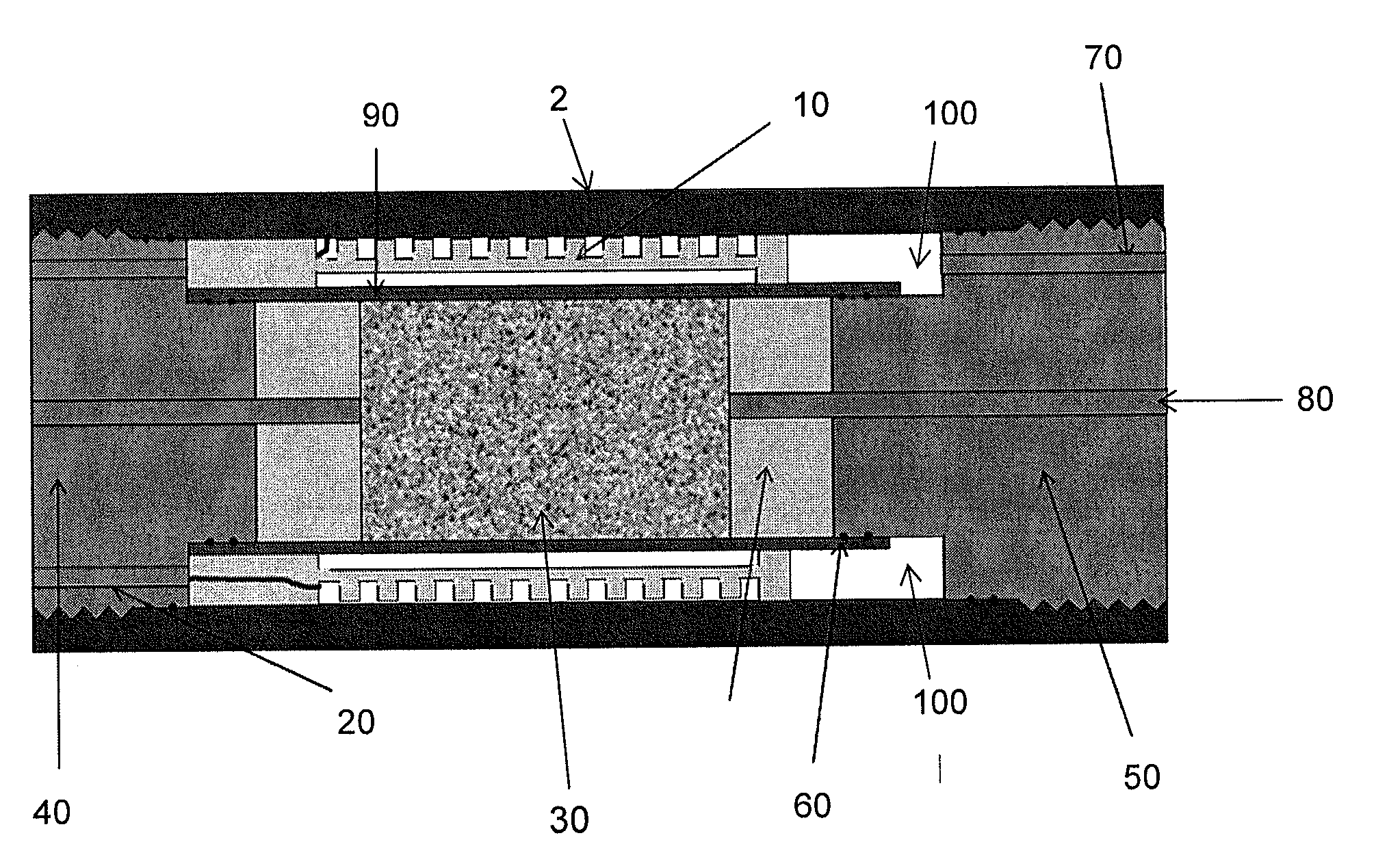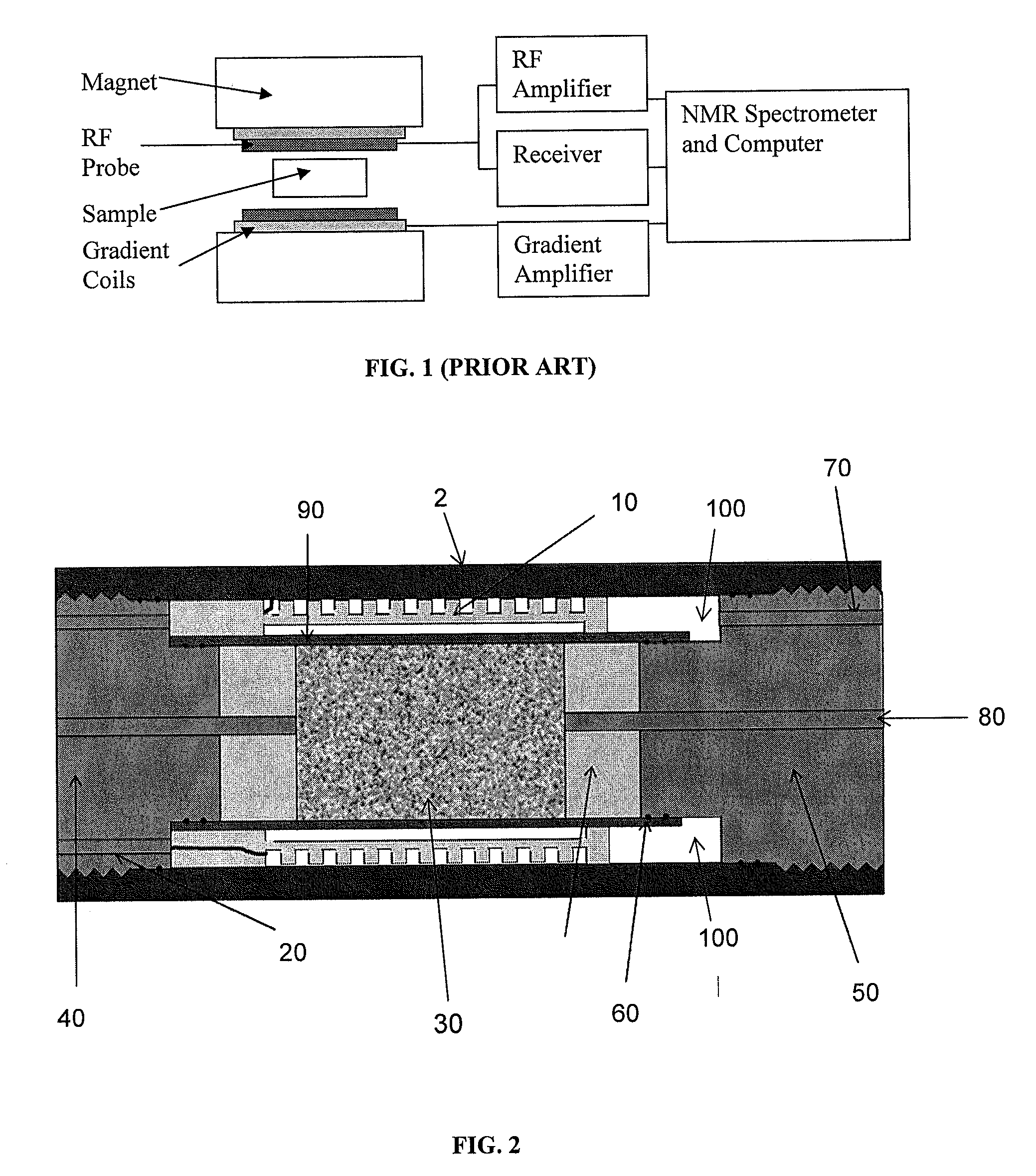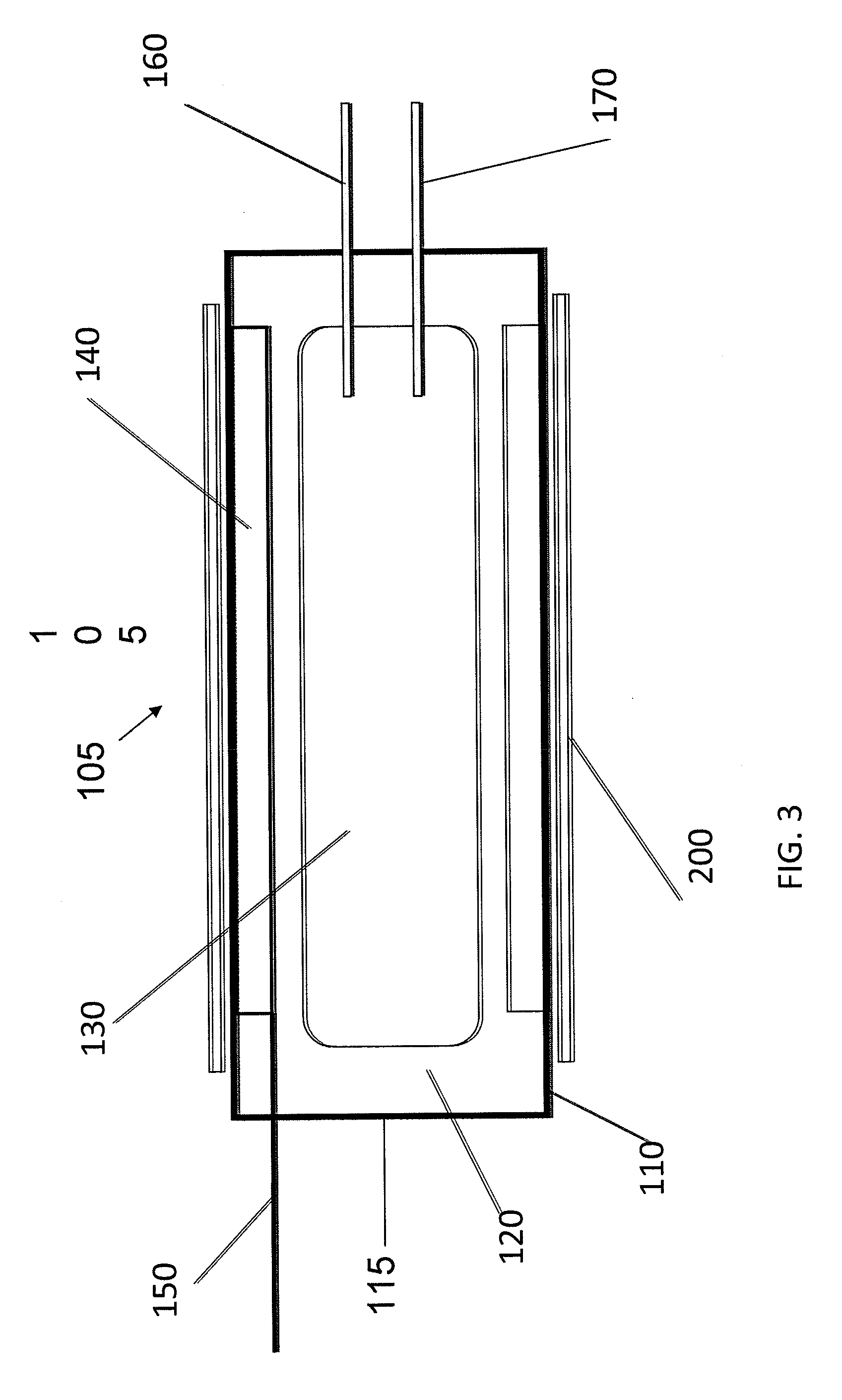Magnetic resonance apparatus and method
a magnetic resonance and apparatus technology, applied in the field of magnetic resonance imaging, can solve the problems of affecting image quality, affecting the use of holder materials, and affecting the signal-to-noise ratio (“snr”), so as to reduce or eliminate the production of artifacts, improve the filling factor, and improve the signal-to-noise ratio.
- Summary
- Abstract
- Description
- Claims
- Application Information
AI Technical Summary
Benefits of technology
Problems solved by technology
Method used
Image
Examples
Embodiment Construction
[0028]The main hardware components of a typical known MRI apparatus are shown in FIG. 1. The magnet produces the required large homogeneous static magnetic field. The RF probe and RF amplifier produces the required high power RF energy needed to excite the sample. The RF probe and receiver detects the very low level NMR signals following the RF excitation. The probe is a simple resonator that transmits and receives signals at the frequency of the NMR signal (called resonance frequency). The RF probe's sensitivity to the low level NMR signal is directly proportional to the relative volume of the probe to the sample volume. This ratio is called the filling factor. Ideally, one would want this factor to be as close to unity as possible.
[0029]The gradient coil and amplifier modifies the static magnetic field in such a way that positional information can be encoded into the detected signal and an image can be created. Typically, the magnetic field is changed linearly in the three spatial...
PUM
 Login to View More
Login to View More Abstract
Description
Claims
Application Information
 Login to View More
Login to View More - R&D
- Intellectual Property
- Life Sciences
- Materials
- Tech Scout
- Unparalleled Data Quality
- Higher Quality Content
- 60% Fewer Hallucinations
Browse by: Latest US Patents, China's latest patents, Technical Efficacy Thesaurus, Application Domain, Technology Topic, Popular Technical Reports.
© 2025 PatSnap. All rights reserved.Legal|Privacy policy|Modern Slavery Act Transparency Statement|Sitemap|About US| Contact US: help@patsnap.com



